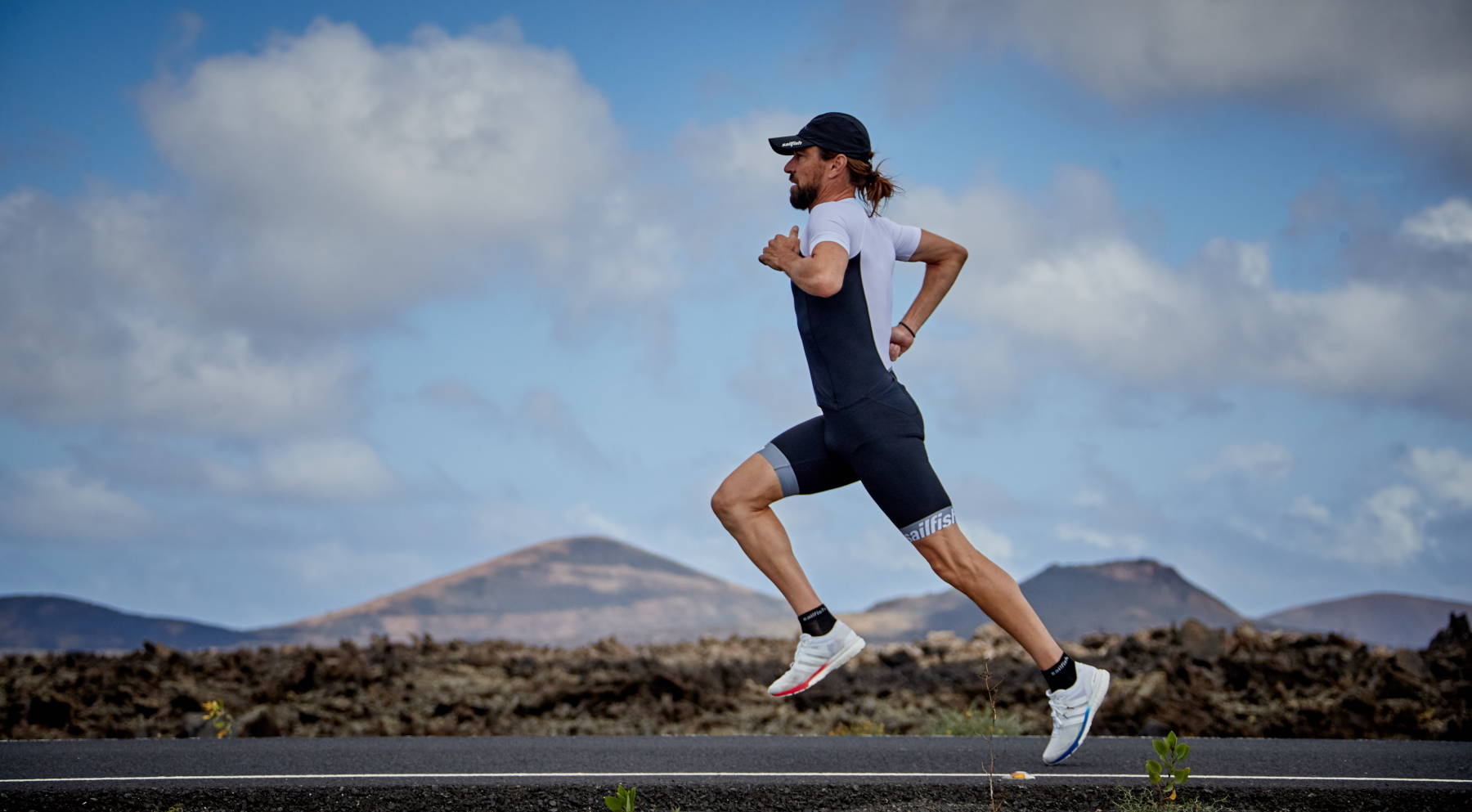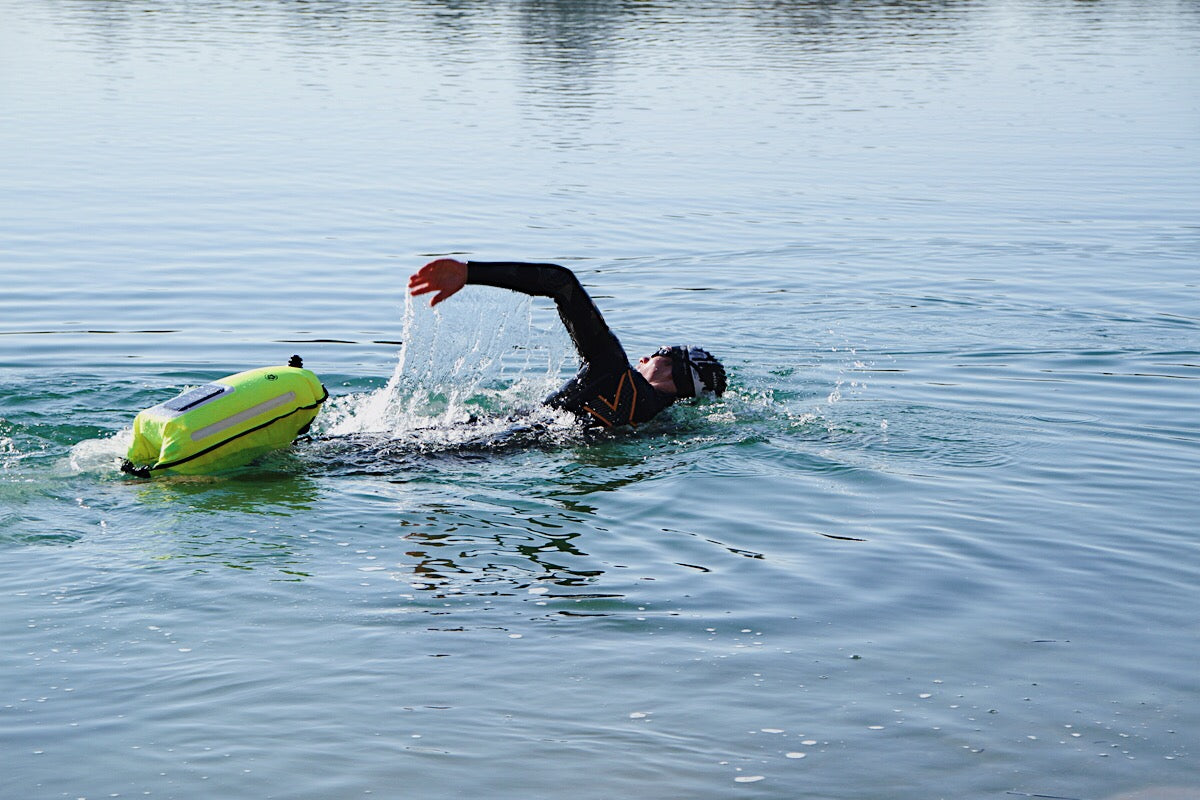One-piece or two-piece? Classic one-piece suit or aerosuit? Triathlon beginner or Ironman finisher? In this article we give you a comprehensive overview of the requirements for competition clothing for the different distances and show you the most sensible variants.
Of course, the choice of competition clothing is as individual as the choice of all other equipment. Depending on size and physique, preferred distance, color, no one knows better than the athlete himself what he needs. But in order to be at the start with the perfect equipment, you first have to carry out a precise analysis of your own needs.
One piece or two piece?
The narrower purpose of triathlon-specific clothing is to be able to compete in all three disciplines without having to change clothes. The functional textiles should therefore fit snugly, be breathable, dry quickly and feel like a second skin throughout the race. This functional clothing has established itself as a one-piece suit (trisuit) or two-piece variant (tri short + tri singlet). There is no right or wrong, both variants have certain advantages that each athlete must weigh for themselves.
Benefits one piece
- continuous, tight fit, no flapping, better aerodynamics
- greater stabilization in the trunk / upper body
- overall fewer seams, i.e. fewer "potential problem areas"
- no slipping with a lot of movement
Advantages two-piece
- The top and bottom are more flexible in terms of size and color combination
- greater freedom of movement in the trunk / upper body
- going to the toilet is easier during the race
- The upper part can be rolled up for better cooling when running
Classic one-piece suit or aerosuit?
The basic distinction in triathlon one-piece suits: with or without sleeves? Trisuits without sleeves are the "classic" one-piece suits that have been established in triathlon for many years and offer the athlete all the important properties to meet all the requirements of swimming, cycling and running. The biggest advantage of the sleeveless variant is the unrestricted arm freedom. Trisuits with sleeves are usually referred to as "aerosuits" : the closed, streamlined design offers improved aero efficiency for optimal performance, especially when cycling over longer triathlon distances. Another advantage of the closed system is sun protection over the entire back and shoulders.
Test small, start worry-free on a large scale
It makes sense to test your competition clothing before the season, or in the run-up to a competition. This is the only way to determine whether the clothing rubs, pinches or itches, and whether the various pieces of equipment (shoes, start number strap, goggles, etc.) work well together. If weak points are discovered, the material can be exchanged before the race or chafing can be minimized with the help of BodyGlide .
Sprint or everyone distance
Sprint distance (alternatively also known as people's distance / everyone's triathlon) usually summarizes all races that are about half the Olympic distance (standard: 750m swim - 20 km bike - 5 km run). The fastest can cover this distance in just under an hour, most recreational athletes complete the sprint distance in about 1.5 - 2 hours. For beginners and recreational athletes, a classic, sleeveless trisuit is recommended for the sprint distance . They offer everything you need: triathlon-specific functional clothing, breathable, freedom of movement when swimming (even without a wetsuit), are quick-drying, have a light seat pad and small back pockets for taking bars or gels.
In addition to these core functions, additional technologies and higher-quality material processing improve the specific functionality. This includes, for example:
- Coldblack (black surface that still reflects the sunlight)
- Lotus blossom effect (clothing no longer gets wet)
- compression effect
- Teflon coatings (better gliding in the water)
- Chamois seat pad (better padding than a conventional fleece padding)
- welded seams (no pressure/friction/chafing points)
Olympic distance
Over 1.5-40-10 kilometers it gets more to the point. Even at this distance, one-piece suits still offer the necessary comfort, even at high speeds. Nothing slips, and when neoprene is banned, a hydrodynamic coating offers the lowest water resistance.
While minimalism was still appropriate on the sprint distance, it can be a little more comfortable on the Olympic distance. A thin chamois pad offers some cushioning over 40 kilometers by bike, but doesn't bother you over ten kilometers of running. If you don't just want to bring your food on the bike, or also use gel on the running route, you should make sure when buying that the suit has tight-fitting pockets that do not flap when neoprene is banned.
Classic one-piece suit vs. aerosuit
At the Olympic distance you can see both variants fairly evenly distributed. Most recreational athletes wear the same one-piece suit as they do for the sprint distance, ie a classic, sleeveless one-piece suit that also meets all the requirements for the Olympic distance.
Ambitious triathletes often choose an aero trisuit, ie with short sleeves . The overall aerodynamic concept of the one-piece suit helps to save additional watts in addition to other aerodynamic components (e.g. helmet, triathlon bike in general, seating position, etc.) - at speeds of around 40 km/h all these elements add up to a significant aerodynamic advantage. These aerosuits often include many of the additional features described above. This also makes the aerosuits significantly higher quality. The padding is also better adapted to longer cycling distances.
middle and long distance
Aero is everything. Athletes with classic, sleeveless one-piece suits are clearly in the minority - not only the aerodynamic advantage of the aerosuits is too big. Especially during long competitions, they offer more extensive sun protection over the entire back and shoulders. As described above, it is important to test the trisuit in the core units in preparation for the competition (long bike units, paddock training), especially for the longer distances, in order to answer important questions for the competition: How does the suit feel after 4/5/6 hours at? How easy is it to get to the pockets to get bars or gel out? Is there a risk of chafing? How well can I get out of the suit and back into it if I have to go to the toilet?




















